VOS1/ES2, the successor to VOS1/ES, was a general-purpose medium OS suitable for departmental distributed processing.
VOS1/ES2 maintained continuity from VOS1/ES and achieved advanced distributed processing functions such as Distributed Department Computer Connection (DDC) that linked dispersed departmental computers with the host computer, a slip data distribution/processing system (Form-MMC) and an extended host access function.
In addition, the structure of the OS basic part was improved in response to higher performance of the processor, in order to expand system capacity and increase system performance.
The hardware models on which VOS1/ES2 operated were M-630, M-640 and M-660.
Figure 1 shows the objectives of developing VOS1/ES2 and its features.

- Home >
- Historical Computers in Japan >
- Mainframe OS >
- VOS1/ES2
【Hitachi】 VOS1/ES2
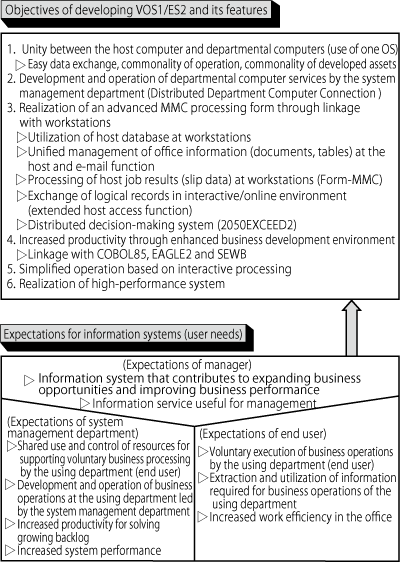
Hitachi announced VOS1/ES2 in September 1987 and started shipping it in March 1988.
VOS1/ES2 had the following features as a general-purpose medium OS:
| Feature | Description |
|---|---|
| Support for departmental distributed system (DDC: Distributed Department Computer Connection) | A form of distributed processing in which the EDP department using the host computer leads actions such as development, management and distribution of business programs on departmental computers, monitoring of execution of departmental business operations and collection of information on them, and turning the power on/off. Operable through interactive operations using Japanese-language menu guidance on a workstation . |
| Slip data distribution/processing system (Form-MMC) | A system that directly distributes slip data on the results of batch and online executions to workstations through micro-mainframe coupling (MMC), allowing processing of these data at workstations . |
| Extended host access function | A function to provide means of free communication between an online/interactive user program on the host and a user program on a workstation . This facilitates creation of business operations functionally distributed to workstations. |
| Unification of online/interactive operations | Realizes unification of online and interactive operations by supporting the execution of online business operations from an interactive menu (user business menu) and the outputting of online slips via spooling. |
| Expansion of system capacity |
Supports a real storage capacity of 128 MB, and inherits the multi-stage method that suits small to medium machines from VOS1/ES as the virtual storage control method. Extends the system stage to a 31-bit address (2 GB max) to expand system size and increase performance. Has multiple stages of 24-bit address (16 MB) for the user stage to guarantee compatibility with existing programs. |
Figure 2 shows a comparison between the previous host-centralized processing with VOS1/ES and the departmental distributed processing using VOS1/ES2. In departmental distributed processing, VOS1/ES2 is used in both the host system and the departmental system.
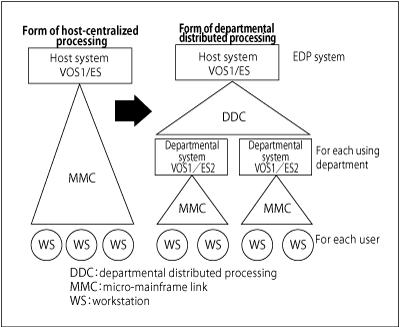
Figure 3 shows a comparison between slip-data distribution and processing system Form-MMC and the previous form. The previous method required re-entry of paper slips. Use of Form-MMC enabled direct distribution of slip data on the results of batch and online executions to workstasitons , allowing processing of these data at workstations.
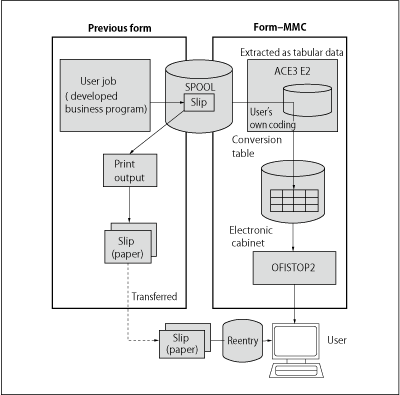
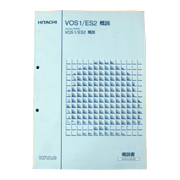 | 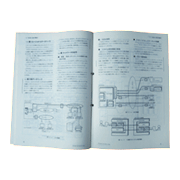 | |
| Cover of manual for VOS1/ES2 | Sample descriptions from the manual for VOS1/ES2 |
All Rights Reserved, Copyright (C) Information Processing Society of Japan
